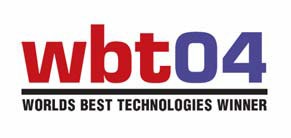Tech Briefs
Savannah River National Laboratory
In Situ Generation of Oxygen-Releasing Metal Peroxides
A new approach to the clean up of groundwater containing organic and/or inorganic contaminants involves the creation of in situ oxygen reservoirs. These reservoirs can release dissolved oxygen slowly and steadily for long periods of time over broad subsurface areas.
At a glance
- Works with organic and inorganic contaminants
- Enhances microbial growth
- Enables precipitation
- Effects redox reactions
- Requires minimal infrastructure
- Acid mine drainage remediation
- Reduces cost and supports quicker, easier clean up
- U.S. patent 7,160,471
New approach increases in situ treatment effectiveness
Traditional, ex situ pump-and-treat methods for cleaning up contaminated groundwater are expensive and take a long time. Cheaper and quicker in situ methods include the use of naturally occurring microbes that digest the contaminants and turn them into harmless byproducts. Alternatively, treatment compounds can be injected into groundwater to precipitate and immobilize contaminants.

A readily available, widespread source of dissolved oxygen is needed to enhance such in situ remediation methods. But, providing an oxygen-rich environment in a contaminated plume is problematic. Many materials other than the contaminants will take up oxygen. And, because of its low solubility, oxygen tends to stay close to the site of injection, rendering the effective area of treatment relatively small. Also, the formation of insoluble precipitates, such as ferric hydroxide, tends to clog the injection apparatus.
To address these problems, oxygen must be constantly injected at many sites, which increases the cost and complexity of otherwise promising in situ remediation methods.
Metal peroxides provide source of oxygen
Researchers at the Savannah River National Laboratory (SRNL) have discovered a method of creating in situ metal peroxides, which slowly release oxygen in a soluble form in aqueous environments.
Metals are typically distributed throughout the soils through which groundwater plumes move. If not present, dissolved metals may be injected into the subsurface area to be treated.
In the new method, different chemicals are injected into the subsurface region through different injection wells. The chemicals disperse throughout the groundwater and permeate the soil. As the chemicals mix underground, they react to form free, dissolved hydroxyl radicals. The hydroxyl radicals create a highly oxidizing condition in which the metals in the soil are converted to metal peroxides.
The metal peroxides provide a widespread long-term in situ source of dissolved oxygen. This continuous release of oxygen creates oxidative conditions sufficient to promote the growth of microbial agents and to precipitate certain contaminants. The chemical combination also may be introduced to the subsurface area ahead of the groundwater plume. The result would be an oxygen-rich “wall” through which the plume would pass.
For groundwater contaminated by acid mine drainage or coal pile runoff, the continuous supply of oxygen creates an environment in which ferrous iron is converted to ferric iron. In its ferric state, iron is very effective in co-precipitating a number of contaminating metals. The precipitated metals are immobilized and will not be transported to downstream water sources.
Test results are positive
A contaminated groundwater plume at the Savannah River Site in Aiken, S.C., was treated successfully by the injection of chemicals. For two years after the injection, dissolved oxygen concentrations were measured at 300 percent to 500 percent of the expected values based on saturation with atmospheric oxygen.
Verified performance
During a 10-month period, a MicroBlower removed 234 pounds of volatile organic compounds from a contaminated groundwater plume beneath the Savannah River Site (SRS).
Partnering opportunities
U.S. Patent 7,160,471 has been issued for this invention.
SRNL invites interested companies with proven capabilities in this area of expertise to enter into a licensing agreement with SRNL to market this nuclear material detection system. Interested companies will be requested to submit a business plan setting forth company qualifications, strategies, activities, and milestones for commercializing this invention.
Qualifications should include past experience at bringing similar products to market, reasonable schedule for product launch, sufficient manufacturing capacity, established distribution networks, and evidence of sufficient financial resources for product development and launch.
Download Tech Brief
Contact Information
Savannah River National Laboratory
E-mail: partnerships@srnl.doe.gov